Politics
Jamaica’s strongest-ever storm, Hurricane Melissa, turns to Cuba
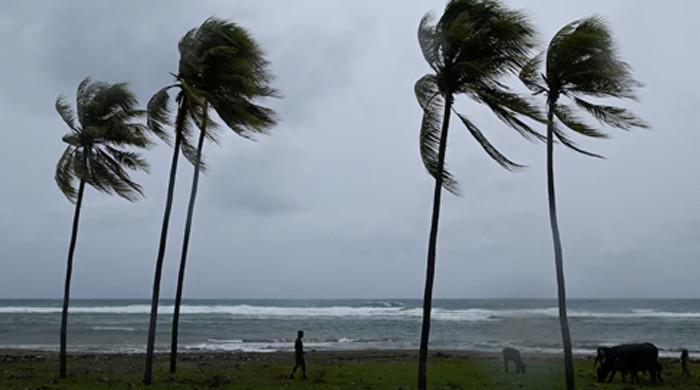
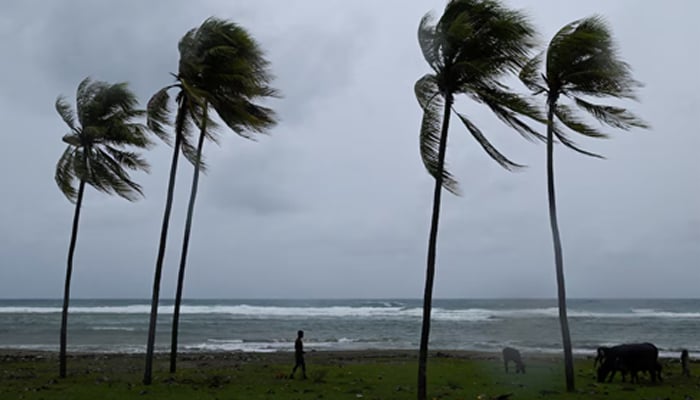
- Storm leaves hundreds of thousands of Jamaicans without power.
- Parts of western Jamaica come ‘underwater,’ says minister.
- Hurricane Melissa comes after Beryl battered Jamaica last year.
Hurricane Melissa churned toward Cuba’s second-largest city with the force of a powerful Category 4 storm on Tuesday, hours after making landfall in neighboring Jamaica as the strongest-ever cyclone on record to hit that Caribbean island nation.
Melissa roared ashore near Jamaica’s southwestern town of New Hope, packing sustained winds of up to 185 mph (295 kph), according to the US National Hurricane Center, well above the minimum 157 mph (252 kph) wind speed of a Category 5 storm, the highest level on the Saffir-Simpson wind scale.
In southwestern Jamaica, the parish of St Elizabeth was left “underwater,” an official said, with more than 500,000 residents without power.
“The reports that we have had so far would include damage to hospitals, significant damage to residential property, housing and commercial property as well, and damage to our road infrastructure,” Jamaica’s Prime Minister Andrew Holness said on CNN after the storm had passed.
Holness said the government had not received any confirmed storm-related fatalities, but given the strength of the hurricane and the extent of the damage, “we are expecting that there would be some loss of life.”
Melissa’s winds subsided to 145mph (233kph), the NHC said, as the storm drifted past the mountainous island, lashing highland communities vulnerable to landslides and flooding.
The hurricane was forecast to curve to the northeast on a trajectory toward Santiago de Cuba, Cuba’s second-most populous city.
“We should already be feeling its main influence this afternoon and evening,” Cuban President Miguel Diaz-Canel said in a message published in state newspaper Granma, calling on citizens to heed evacuation orders.
“There will be a lot of work to do. We know that this cyclone will cause significant damage.”
Cuban authorities said some 500,000 people were ordered to move to higher ground. In the Bahamas, next in Melissa’s path to the northeast, the government ordered evacuations of residents in southern portions of that archipelago.
Farther to the east, the island shared by Haiti and the Dominican Republic had faced days of torrential downpours leading to at least four deaths, authorities there said.
Local media reported at least three deaths in Jamaica during storm preparations, and a disaster coordinator suffered a stroke in the onset of the storm and was rushed to hospital. Late Tuesday, many areas remained cut off.
Jamaica’s ‘storm of the century’
No stranger to hurricanes, Jamaica had never before been known to take a direct hit from a Category 4 or 5 storm, and the government called for foreign aid even as it prepared for Melissa’s arrival.
Meteorologists at AccuWeather said Melissa ranked as the third most intense hurricane observed in the Caribbean after Wilma in 2005 and Gilbert in 1988 – the last major storm to make landfall in Jamaica.
“It’s a catastrophic situation,” the World Meteorological Organisation’s tropical cyclone specialist Anne-Claire Fontan told a press briefing, warning of storm surges up to 4 meters high. “For Jamaica, it will be the storm of the century for sure.”
Colin Bogle, an adviser to aid group Mercy Corps in Portmore, near Jamaica’s capital of Kingston, said he had heard a loud explosion in the morning before everything went dark. Sheltering with his grandmother, he heard relentless noise and saw trees violently tossed in the wind.
“People are scared. Memories of Hurricane Gilbert run deep, and there is frustration that Jamaica continues to face the worst consequences of a climate crisis we did not cause,” he said.
Scientists warn that storms are intensifying faster with greater frequency as a result of warming ocean waters. Many Caribbean leaders have called on wealthy, heavy-polluting nations to provide reparations in the form of aid or debt relief to tropical island countries.
Melissa’s size and strength ballooned as it churned over unusually tepid Caribbean waters, but forecasters warned that its slow movement could prove particularly destructive.
Food aid will be critical, Bogle said, as well as tools, vehicle parts and seeds for farmers. Like last year’s devastating Hurricane Beryl, Melissa crossed over some of Jamaica’s most productive agricultural zones.
On Monday, Holness said the government had an emergency budget of $33 million and insurance and credit provisions for damage a little greater than Beryl.
‘Like a roaring lion’
Melissa made landfall in southwestern Jamaica, near the parish border between Westmoreland and St Elizabeth, one of the areas hardest-hit by Beryl.
St Elizabeth was submerged by flooding, local government minister Desmond McKenzie told a press briefing. Its only public hospital lost power and reported severe damage to one of its buildings.
Several families were known to have been stranded in their homes, but rescue teams managed to reach one group that included four babies, McKenzie said.
In Portland Cottage, some 150 km (94 miles) away from where Melissa made landfall, Collin Henry McDonald, 64, a retiree, told Reuters as the storm advanced that his community was seeing strong rain and winds, but his concrete roof was holding steady.
“It’s like a roaring lion. It’s mad. Really mad,” he said.
Around 15,000 Jamaicans were in temporary shelters by late Tuesday, McKenzie said. The government had issued mandatory evacuation orders for 28,000 people, but many were reluctant to leave their homes.
The International Federation of the Red Cross said up to 1.5 million people in Jamaica were expected to be directly affected by the storm.
Politics
US intercepts oil tanker off Venezuelan coast, Reports
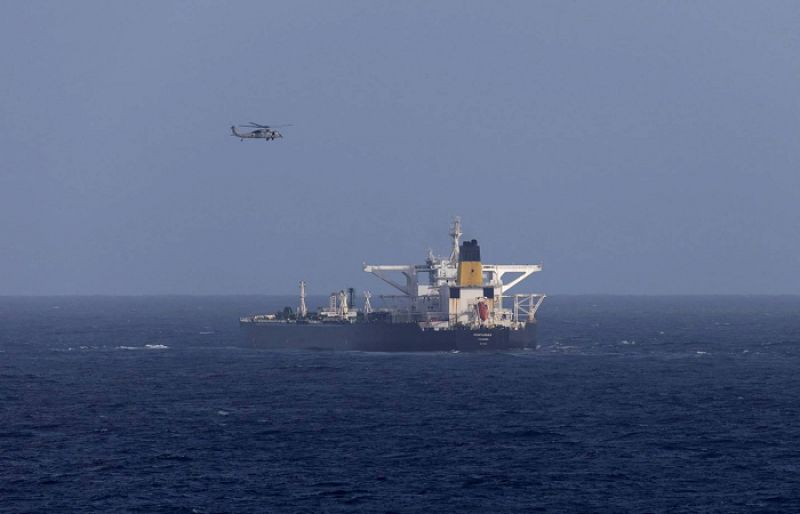
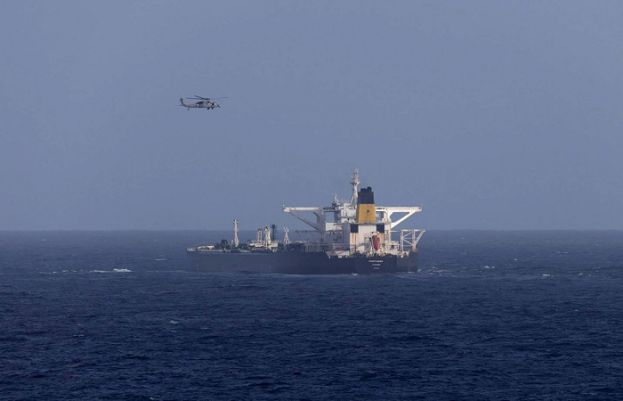
The United States has intercepted an oil tanker off the coast of Venezuela in international waters, U.S. Homeland Security Secretary Kristi Noem confirmed Saturday, a move that comes just days after US President Donald Trump announced a “blockade” of all sanctioned oil tankers entering and leaving Venezuela.
It’s the second time in recent weeks that the United States has gone after a tanker near Venezuela amid a large U.S. military build-up in the region.
Noem confirmed the Coast Guard intercepted a tanker that was last docked in Venezuela.
“The United States will continue to pursue the illicit movement of sanctioned oil that is used to fund narco terrorism in the region,” she said in a statement posted to social media. “We will find you, and we will stop you.”
Three US officials earlier Saturday had told Reuters that the vessel had been intercepted.
The Coast Guard and Pentagon referred questions to the White House. White House spokeswoman Anna Kelly said the tanker contained sanctioned oil.
“It was a falsely flagged vessel operating as part of the Venezuelan shadow fleet to traffic stolen oil and fund the narcoterrorist Maduro regime,” she wrote on X.
Venezuela’s oil ministry and state oil company PDVSA did not immediately reply to requests for comment. The Venezuelan government called the tanker interception a “serious act of international piracy.”
Venezuela “denounces and rejects the theft and hijacking of a new private vessel transporting oil, as well as the forced disappearance of its crew, committed by military personnel of the United States of America in international waters,” the statement said.
Caracas said the actions will be reported to the United Nations Security Council, other multilateral organizations and governments.
British maritime risk management company Vanguard said the vessel was believed to be the Panama-flagged Centuries, which was intercepted east of Barbados in the Caribbean Sea.
Jeremy Paner, a partner at Washington, D.C., law firm Hughes Hubbard and a former OFAC investigator, said the vessel has not been sanctioned by the US.
An October police raid in northern Rio de Janeiro became the deadliest in Brazil’s history, after leaving more than 120 people dead.
“The seizure of a vessel that is not sanctioned by the US marks a further increase in Trump’s pressure on Venezuela,” Paner said. “It also runs counter to Trump’s statement that the U.S. would impose a blockade of all sanctioned oil tankers.”
Politics
Gunmen kill 9, wound 10 in South Africa bar attack
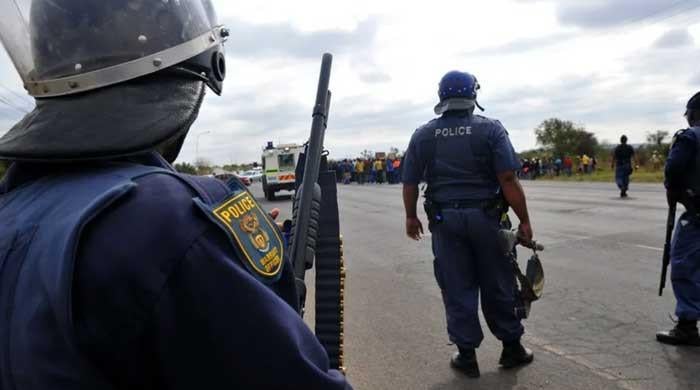
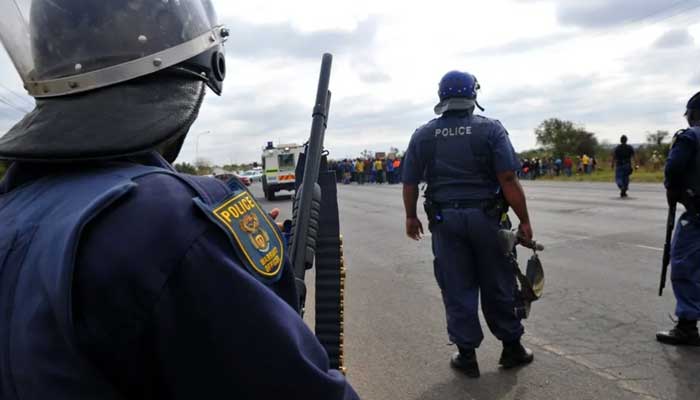
- Manhunt for the attackers has been launched, say police.
- Attackers in 2 vehicles randomly opened fire while fleeing scene.
- Dead included a driver from online car-hailing service.
JOHANNESBURG: Nine people were killed when unknown gunmen opened fire at a bar outside Johannesburg early Sunday, police said, in the second such shooting in South Africa this month.
Ten more were wounded when around a dozen men attacked the tavern at Bekkersdal, in a gold mining area around 40 kilometres (25 miles) southwest of the city, just before 1:00 am (2300 GMT).
Police initially said 10 people were killed but later revised the toll downwards.
The attackers in two vehicles “opened fire at tavern patrons and continued to shoot randomly as they fled the scene,” a police statement said.
The dead included a driver from an online car-hailing service who had been outside the bar, provincial police commissioner Major General Fred Kekana told SABC television.
A manhunt for the attackers had been launched, police said.
South Africa, the continent’s most industrialised nation, is grappling with entrenched crime and corruption driven by organised networks.
Shootings are common and often fuelled by gang violence and competition between informal businesses, contributing to one of the highest murder rates in the world.
On December 6, gunmen stormed a hostel at Saulsville township near the capital Pretoria, killing a dozen people including a three-year-old child.
Police said that shooting was at a site that was illegally selling alcohol.
Many South Africans own licensed firearms for personal protection but there are many more illegal guns in circulation despite relatively strict ownership laws.
An average of 63 people were killed each day between April and September, according to police data.
Most deaths stemmed from arguments, with robberies and gang violence also driving the toll.
In one of the deadliest recent incidents, 18 relatives were shot dead at a rural homestead in the country’s Eastern Cape province in September 2024.
Politics
famous faces, many blacked-out pages
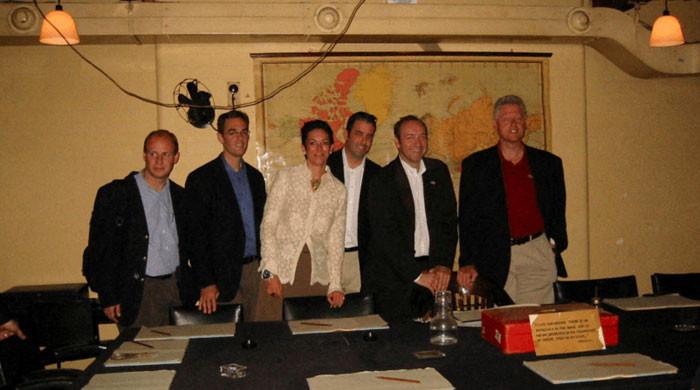

WASHINGTON: The US Justice Department has begun releasing a long-awaited cache of records from its investigations into the politically explosive case of convicted sex offender Jeffrey Epstein — though much of the material remained heavily redacted.
Among the trove released Friday are numerous photographs depicting former Democratic president Bill Clinton and other luminaries, including Mick Jagger and Michael Jackson, in Epstein’s social circle.
The sweeping blackouts across many of the documents – combined with tight control over the release by officials in President Donald Trump’s administration – stoked skepticism over whether this disclosure will silence conspiracy theories of a high-level cover-up.

In one example, a 119-page document labeled “Grand Jury-NY” is entirely redacted. Also, seven pages listing 254 masseuses have every name buried beneath thick black bars alongside the note, “redacted to protect potential victim information.”
Even so, the files shed some light on the disgraced financier’s intimate ties to the rich, famous and powerful – Trump, once a close friend, among them.

At least one file contains dozens of censored images of naked or scantily clad figures. Others show Epstein and companions, their faces obscured, posing with firearms.
Previously unseen photographs include Maxwell with disgraced former prince Andrew, pictured lying across the legs of five people.
Another photo shows a youthful-looking Clinton lounging in a hot tub, part of the image blacked out.
In another, Clinton swims alongside a dark-haired woman who appears to be Epstein’s accomplice, Ghislaine Maxwell.
A ‘fraction’ of the evidence
The White House wasted no time seizing on Clinton’s appearances.
“Slick Willy! @BillClinton just chillin, without a care in the world. Little did he know…” Communications Director Steven Cheung posted on X.
Clinton’s spokesman Angel Urena responded to the newly released files by saying the country “expects answers, not scapegoats.”
“The White House hasn’t been hiding these files for months only to dump them late on a Friday to protect Bill Clinton. This is about shielding themselves,” Urena wrote on X.

Democrats – and a handful of Republicans – voiced frustration that the release fell far short of what was mandated by the Epstein Files Transparency Act.
Republican congressman Thomas Massie, who has long pushed for the release, said it “grossly fails to comply with both the spirit and the letter of the law.”
That law required the government’s entire case file to be posted publicly by Friday, constrained only by legal and victim privacy concerns.
Senate Minority Leader Chuck Schumer said Democrats would “pursue every option to make sure the truth comes out.”
Trump spent months trying to block the disclosure of the files linked to Epstein, who died in a New York jail cell in 2019 while awaiting trial on sex-trafficking charges.

The Republican president ultimately bowed to mounting pressure from Congress – including members of his own party – and last month signed the law compelling publication of the materials by Friday.
Deputy Attorney General Todd Blanche acknowledged in a letter to Congress that the Friday release was incomplete, and that the Justice Department would complete production of files in the coming weeks.
Prosecutors retain discretion to withhold material tied to active investigations, and Blanche said files had also been redacted to protect the identities of Epstein’s hundreds of victims.
‘Democrat hoax’
Trump once moved in the same Palm Beach and New York party scene as Epstein, appearing with him at events throughout the 1990s. He severed ties years before Epstein’s 2019 arrest and faces no accusations of wrongdoing in the case.
But his right-wing base has long fixated on the Epstein saga and conspiracy theories alleging the financier ran a sex trafficking ring for the global elite.

On the campaign trail, Trump vowed to release all the files. Yet after returning to office, he dismissed the transparency push as a “Democrat hoax.”
Trump’s Justice Department ignited a political firestorm in July with a memo declaring there would be no further disclosures from the Epstein probe and his fabled “client list” did not exist before the president bowed to pressure.
Maxwell, Epstein’s former girlfriend, remains the only person convicted in connection with his crimes, and is serving a 20-year sentence for recruiting underage girls for the former teacher and banker, whose death was ruled a suicide.
-

 Business1 week ago
Business1 week agoHitting The ‘High Notes’ In Ties: Nepal Set To Lift Ban On Indian Bills Above ₹100
-

 Business6 days ago
Business6 days agoKSE-100 index gains 876 points amid cut in policy rate | The Express Tribune
-

 Business6 days ago
Business6 days agoStudying Abroad Is Costly, But Not Impossible: Experts On Smarter Financial Planning
-

 Sports6 days ago
Sports6 days agoJets defensive lineman rips NFL officials after ejection vs Jaguars
-

 Tech1 week ago
Tech1 week agoFor the First Time, AI Analyzes Language as Well as a Human Expert
-

 Business1 week ago
Business1 week agoIPO Explained: Meaning, Process, Benefits, Risks
-
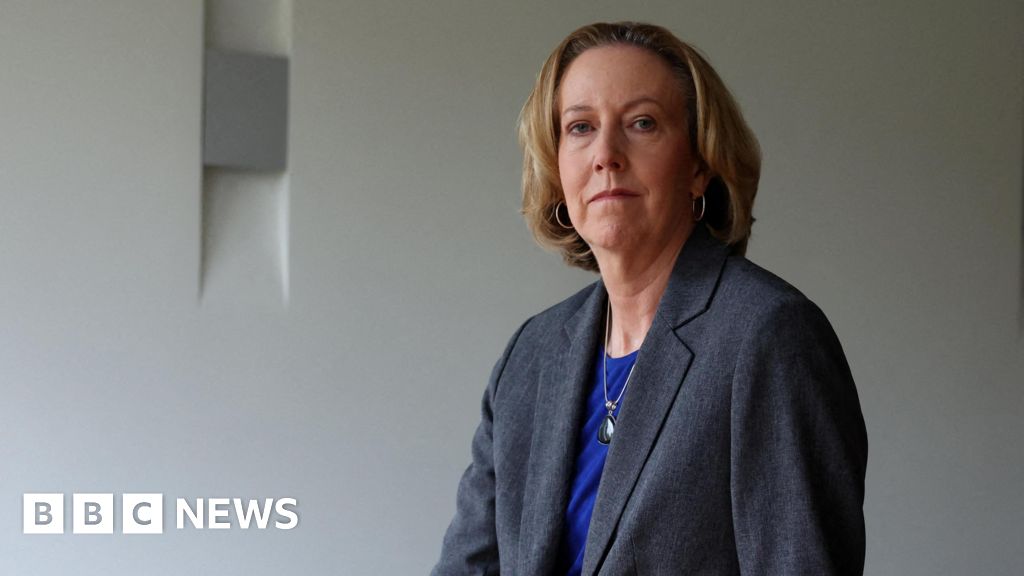
 Business3 days ago
Business3 days agoBP names new boss as current CEO leaves after less than two years
-

 Entertainment6 days ago
Entertainment6 days agoPrince Harry, Meghan Markle’s 2025 Christmas card: A shift in strategy






